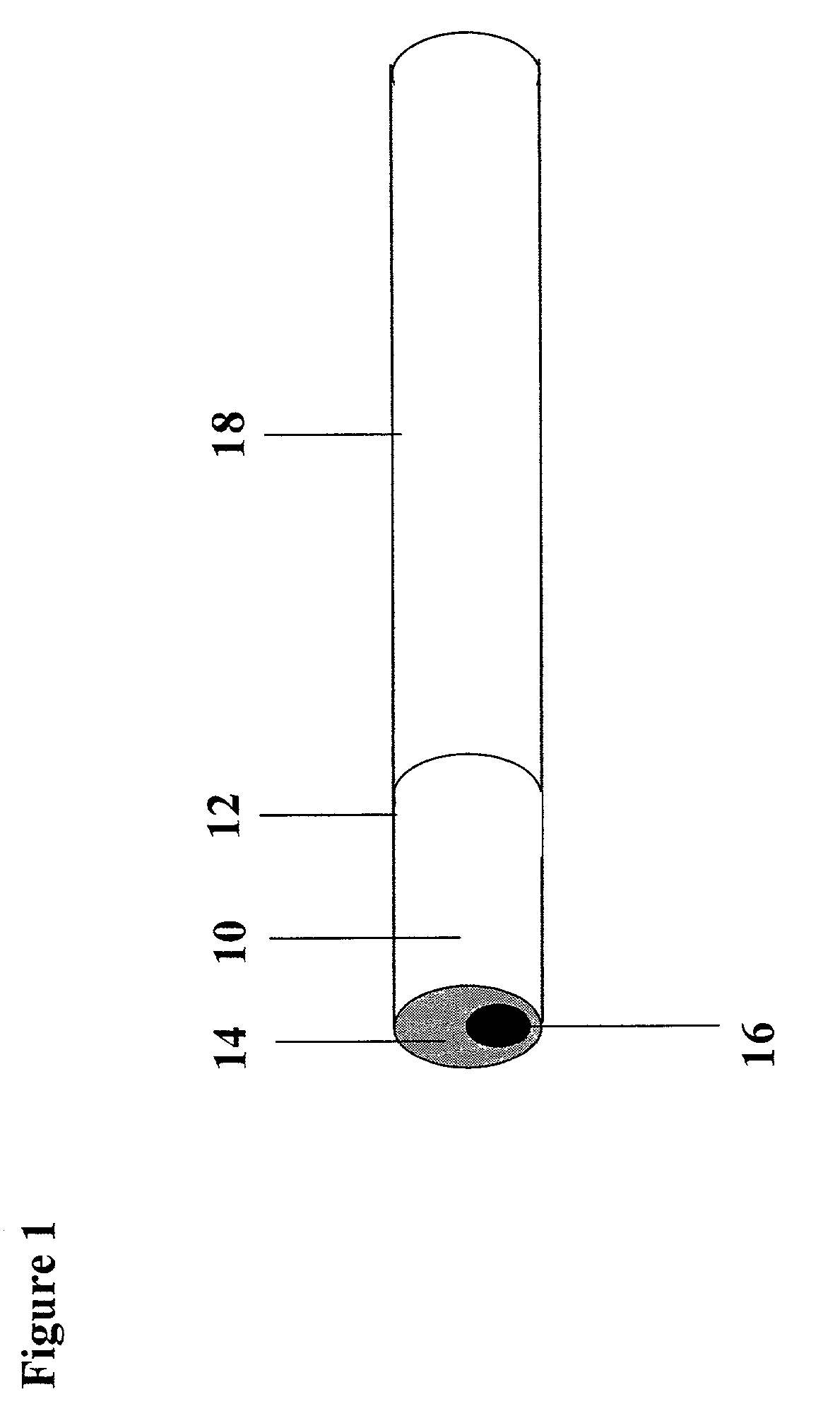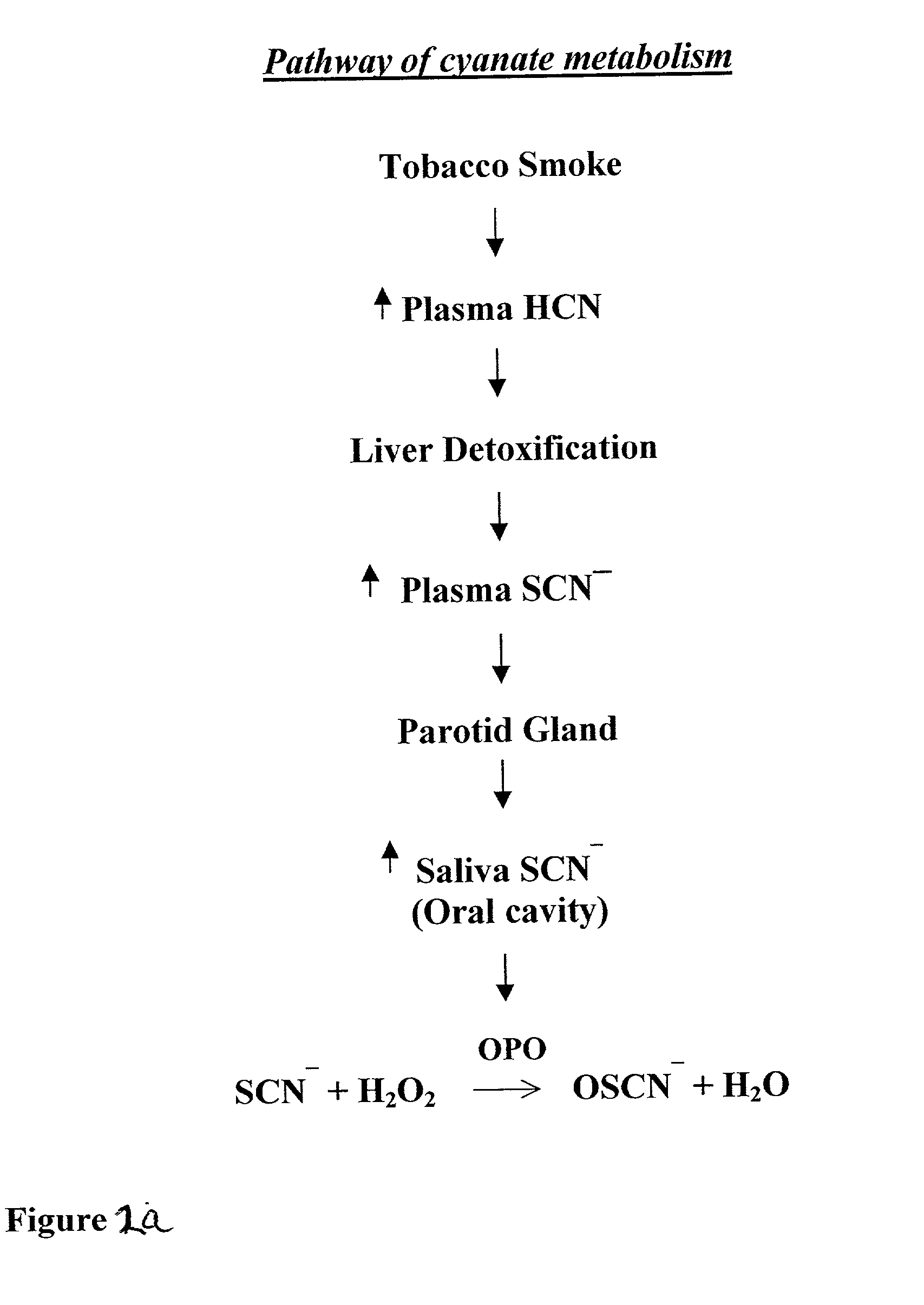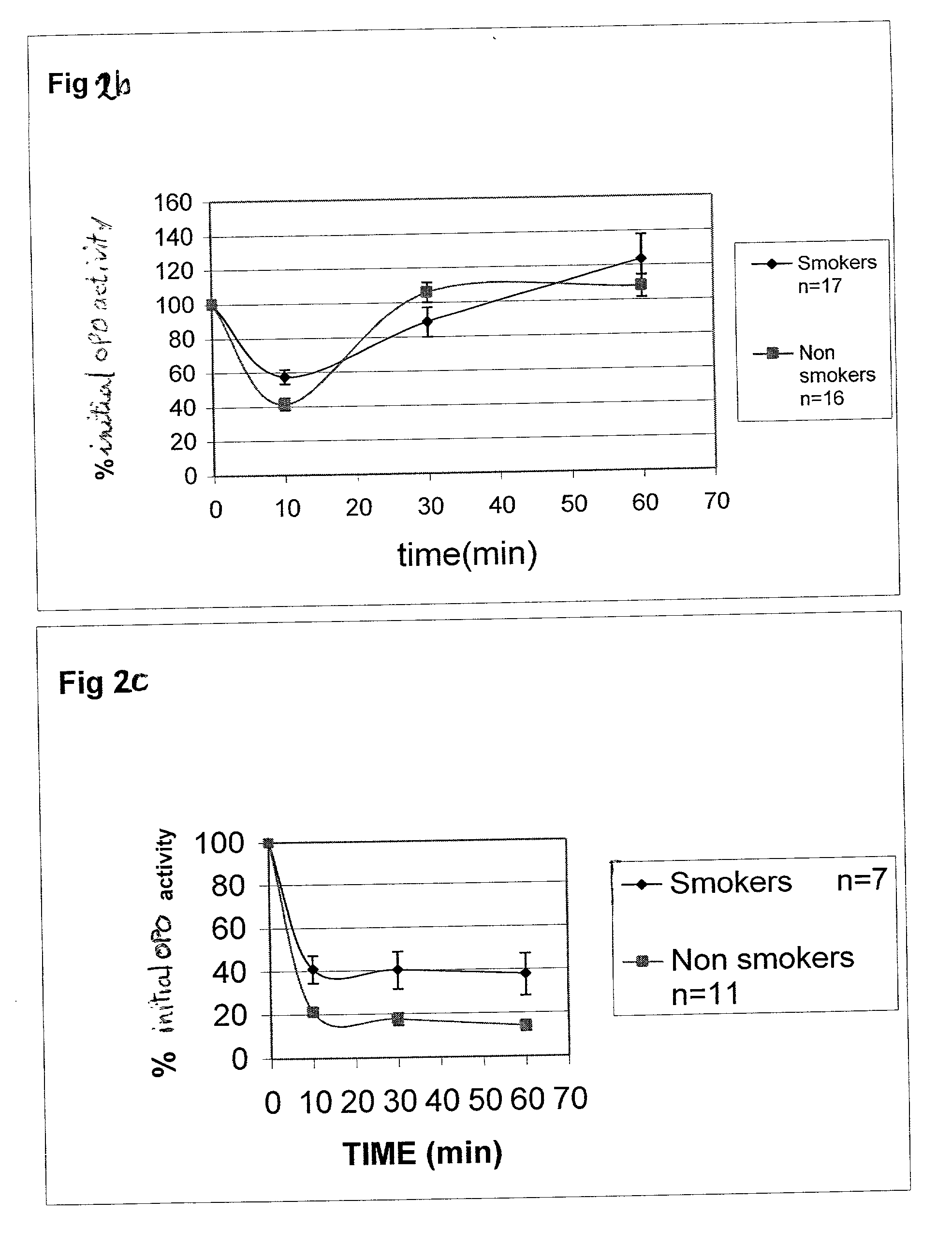Methods, pharmaceutical compositions, oral compositions,filters and tobacco products for preventing or reducing tobacco smoke-associated injury in the aerodigestive tract of a subject
a technology of aerodigestive tract and filter, which is applied in the direction of biocide, plant growth regulator, food science, etc., can solve the problems of reducing the oxidant burden of tobacco consumers, affecting the oral cavity, and affecting the health of tobacco consumers. , to achieve the effect of reducing the oxidant burden, increasing the noxious stimuli, and increasing the reactivity
- Summary
- Abstract
- Description
- Claims
- Application Information
AI Technical Summary
Benefits of technology
Problems solved by technology
Method used
Image
Examples
example 1
Hydroxocobalamin Provides Protection from Tobacco Smoke-induced Loss of Aerodigestive Tract Antioxidant Defenses
[0164] Many common and highly debilitating oral diseases, such as cancer, periodontitis and gingivitis, result from, or are aggravated by consumption of tobacco products, such as tobacco smoking. For example, oral cancer, a frequently lethal and highly debilitating disease, results from tobacco consumption in 50-90% of cases world-wide. One widely accepted mechanism whereby cancer progression is promoted is via oxidant injury, such as protein damage caused by exposure to free radicals.
[0165] The present inventors have therefore analyzed the effects of TS on aerodigestive tract antioxidant defenses and have invented means to prevent such effects, as described below.
[0166] Exposure to tobacco smoke leads to a decrease in oral peroxidase and to an increase in protein damage:
[0167] Oral peroxidase is the critical salivary enzymatic defense against upper digestive tract oxidant...
example 2
The Antioxidants Deferoxamine and Glutathione Prevent Upper Aerodigestive Tract Lymphocyte Death Associated with Exposure to Tobacco Smoke
[0203] Many diseases of the aerodigestive tract are associated with consumption of tobacco products or betel nut chewing. For example, oral SCC is the most common malignancy of the head and neck, having a high rate of morbidity and mortality. In as many as 90% of the cases, this cancer is induced by exposure of oral epithelial cells to tobacco products such as TS, or chewed betel nut. This exposure always occurs in the presence of saliva and presumably is induced by free radicals. Thus, the effects of TS on cells in the presence of saliva was examined, as described below.
[0204] Materials and Methods:
[0205] Mutagenic alterations of oral mucosal cells induced by TS occur in the presence of saliva (22, 23). Thus, in order to explore the interaction between TS and saliva on cells, intact cells were exposed to TS, alone or in the presence of saliva. Ly...
PUM
| Property | Measurement | Unit |
|---|---|---|
| pH | aaaaa | aaaaa |
| pharmaceutical composition | aaaaa | aaaaa |
| oral composition | aaaaa | aaaaa |
Abstract
Description
Claims
Application Information
 Login to View More
Login to View More - R&D
- Intellectual Property
- Life Sciences
- Materials
- Tech Scout
- Unparalleled Data Quality
- Higher Quality Content
- 60% Fewer Hallucinations
Browse by: Latest US Patents, China's latest patents, Technical Efficacy Thesaurus, Application Domain, Technology Topic, Popular Technical Reports.
© 2025 PatSnap. All rights reserved.Legal|Privacy policy|Modern Slavery Act Transparency Statement|Sitemap|About US| Contact US: help@patsnap.com



